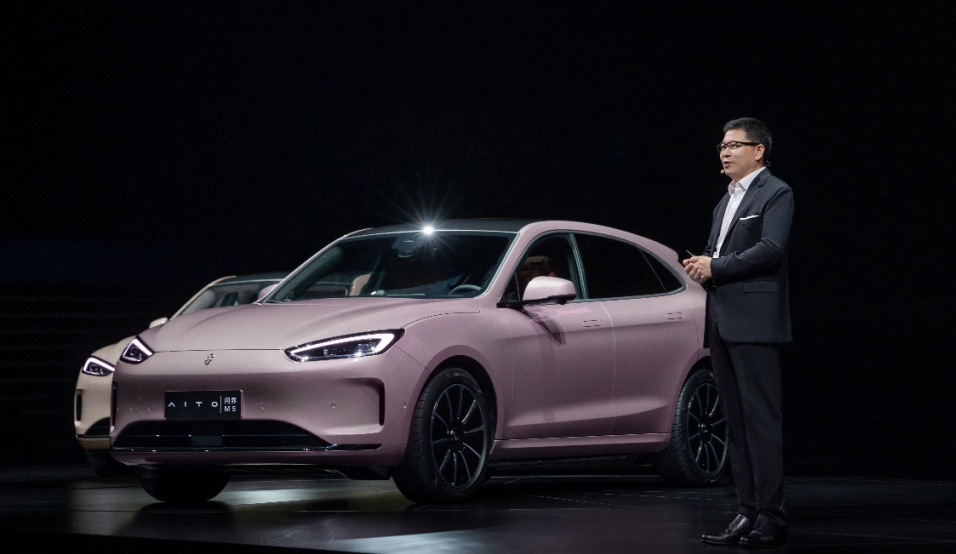Author: Mr.Yu, Michelin
In the afternoon of September 6, 2022, at the Huawei Mate 50 Series and Full-Scenario Autumn New Product Launch Conference, Yu Chengdong, CEO of Huawei Intelligent Automotive Solution BU, unveiled the first pure electric SUV under the AITO brand–AITO WENJIE M5 EV.
Apart from the release of smart life new products, the entire press conference was filled with Yu Chengdong’s unique “Yu-style comparison method”:
-
When announcing the new Mate 50 phone, it was compared to the iPhone 13 Pro Max throughout the event;
-
When introducing the already-released FreeBuds Pro 2 earphones, the accompanying PPT showed the flagship WF-1000 XM4 noise-canceling earphones released by Sony last year, as well as the Apple AirPods Pro, which digital media often compare to;
-
When launching the AITO WENJIE M5 EV, it was frequently compared to the Tesla Model Y, as well as friendly competitor models such as the Mercedes-Benz GLS460 4MATIC, Mercedes-Benz GLE 350 4MATIC, BMW X5 xDrive30Li, and Audi Q7 45 TFSI.
Yes, whether it’s smartphones, earphones, or cars, there isn’t a single domestic brand.
In the current environment, the term “million-dollar luxury car” was only mentioned twice throughout the conference, perhaps indicating the speaker exercised extreme restraint.
During the press conference, Yu Chengdong spent more than forty minutes presenting the most highly anticipated new phones and new cars. For certain competitors, this amount of time spent is not even enough for them to boast about their smartphones’ imaging capabilities, so the information density of this particular conference is exceptionally high.
But the premise is that this is an automobile press conference.
And today’s press conference was too different in style.
WENJIE M5 EV: Can it continue its hot sales?
In the pre-heating stage of the conference a few days ago, Yu Chengdong referred to the AITO WENJIE M5 EV as the “world’s most beautiful SUV.”
As the first pure electric car model of the WENJIE series, the power battery and electric drive system replaced the range extender, causing the size of the AITO WENJIE M5 to become slightly longer and shorter, with the length increasing from 4770mm to 4785mm compared to the range extender version, the height compressing from 1625mm to 1620mm, and the width and wheelbase remain the same.
As a brand that has only been released for less than a year, AITO’s WENJIE M5 sales are truly hot. In August of this year, AITO WENJIE series sold 10,045 units in a single month, almost without experiencing the cognitive communication period and production capacity transition period of a new brand. Therefore, ever since the preview of the WENJIE M5 EV, many people have wondered if the pure electric version can further boost sales?
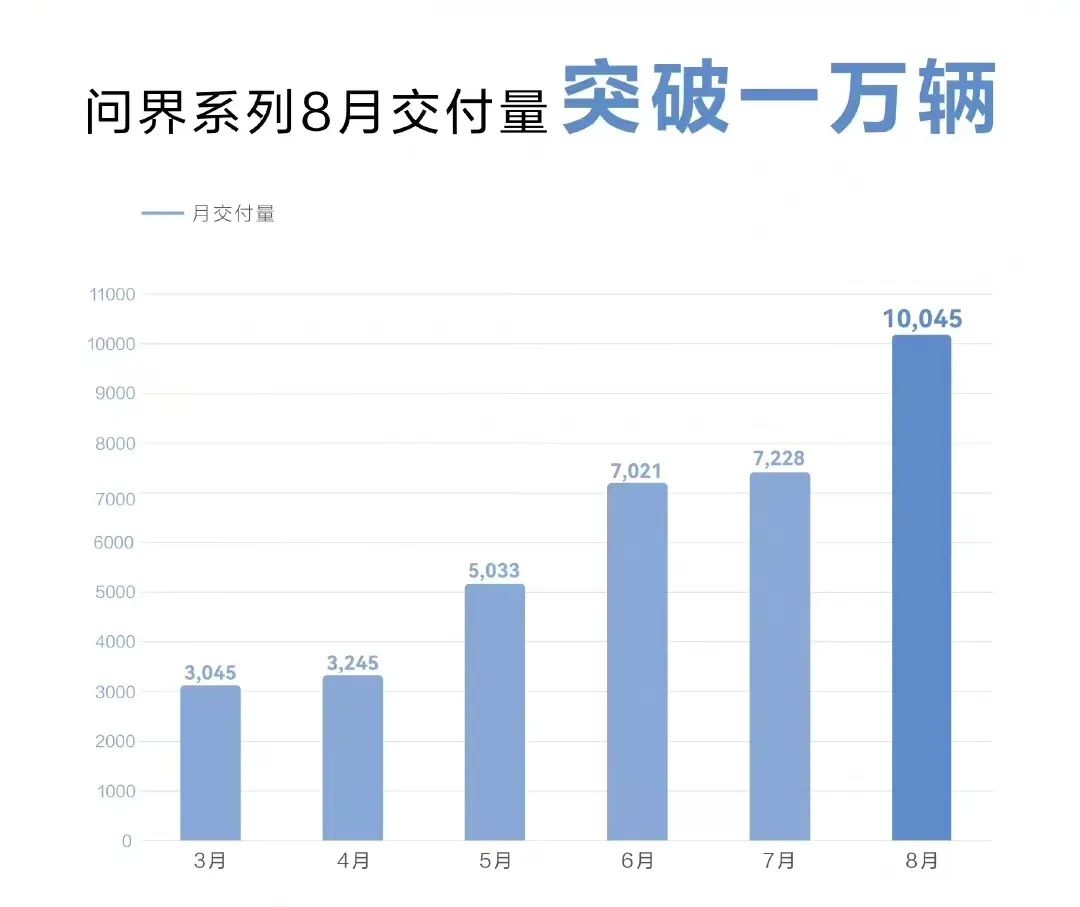
After all, when the extended-range version of the Wanjie M5 was released, the extended-range was still a “niche” market. At that time, there were only a few extended-range SUVs on the market, such as the Ideal ONE and the Voyah FREE extended-range versions. In comparison, pure electric vehicles are a broader market. However, with the market comes more intense competition. For example, it is difficult to avoid the single-product king Model Y in the 300,000 pure electric vehicle segment. During the entire press conference, Model Y was the car that Yu Chengdong mentioned most frequently, aside from their own products.
From a size perspective, the difference between the Wanjie M5 EV and Model Y is not significant – the Wanjie M5 EV is slightly longer and wider. In terms of price, the overlap between the Wanjie M5 EV and Model Y is small; only the dual-motor performance version of the Wanjie M5 EV and the single-motor version of the Model Y are similarly priced at around 310,000 yuan.

If we compare these two models, they are basically equivalent in terms of range, and there is a sense of “The tortoise and the hare” when it comes to the power performance of the Wanjie M5’s dual motor against Model Y’s single motor.
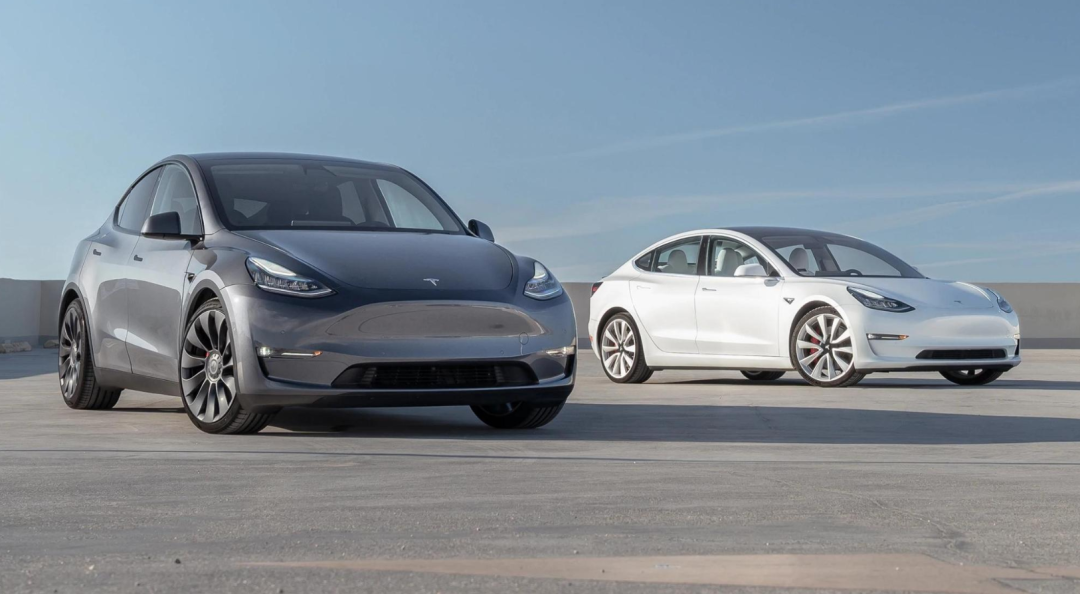
Of course, regarding the Wanjie M5 single-motor version’s lower price, although it avoids Model Y’s price range, it is inevitably compared with other EV models with similar prices, such as the BYD Tang EV single-motor version, the GAC AION LX single-motor version, and the Zeekryin 001 WE version. If we look at the range and power performance, the Wanjie M5 EV does not seem to have an advantage.
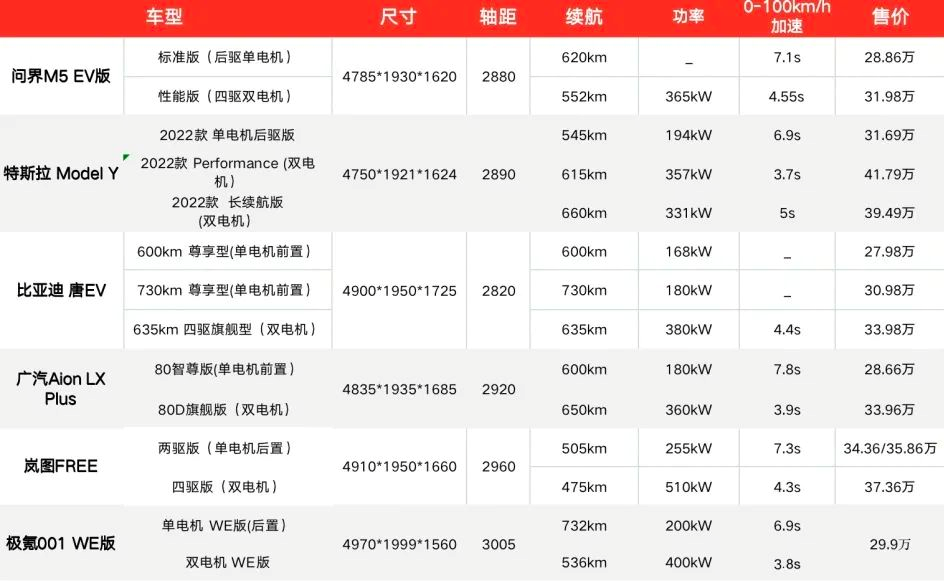
Looking at the most important user concern – recharging experience – products with self-operated recharge systems and support for super-fast charging naturally have a slight advantage, such as Tesla with V3 superchargers and self-operated charging stations, and GAC AION, which supports high-power fast charging. During the press conference, the Wanjie M5 EV did not reveal any plans to build its own charging network. Fast charging supports 129 kilometers in 10 minutes of recharge and takes less than half an hour to charge from 30% to 80%.
In terms of the experience of the self-operated charging network, WmAuto M5 EV attempts to make up for it through software. Therefore, the “Super Power Saving Mode” is added to WmAuto M5 EV, which is not available in the extended-range version. When the battery level is below 15%, it can “squeeze out” an emergency range of 12km to avoid the vehicle shutting down.

Optimizing the experience through software is also the strategy of WmAuto M5 EV, with its moderate hardware performance. In terms of driving experience and intelligence, WmAuto M5 EV is equipped with HUAWEI DATS dynamic adaptive torque system developed by Huawei for the first time, which adjusts torque dynamically according to road conditions and tire adhesion to improve passability while increasing range.

In terms of intelligence, WmAuto M5 is not equipped with Huawei’s high-end intelligent driving solution, but only comes with L2 level assisted driving ability that is “enough” as mentioned by Yu Chengdong. As for the intelligent cabin, the support of HarmonyOS makes WmAuto M5 more suitable for the usage habits and application needs of domestic users. The intelligent experience is also the biggest selling point of the WmAuto series.
Strictly speaking, there is a significant difference in the target audience of WmAuto M5 and Model Y: consumers who choose Model Y are attracted by its advantages, and the small shortcomings in detail experience seem to be insignificant; while WmAuto M5 is like a bucket with no long board at all. Looking at the parameters alone, it is moderate in all aspects, and relies on the user experience of the details to impress its customers.
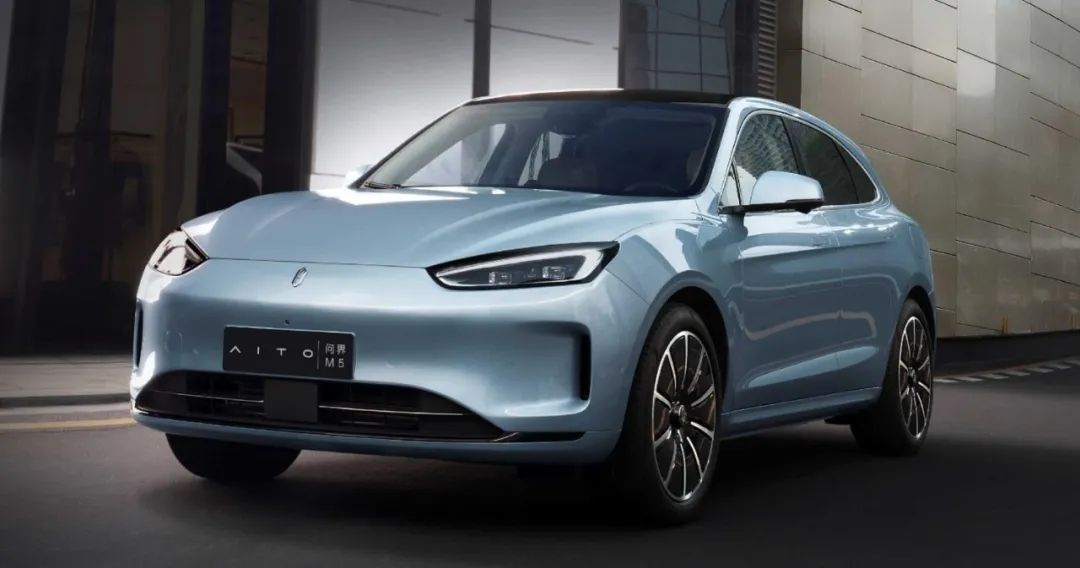
As for whether the sales volume of WmAuto M5 EV version can continue the hot sales of the extended-range version?
We may be able to learn from the experience of another “competitor”, BYD Tang EV.
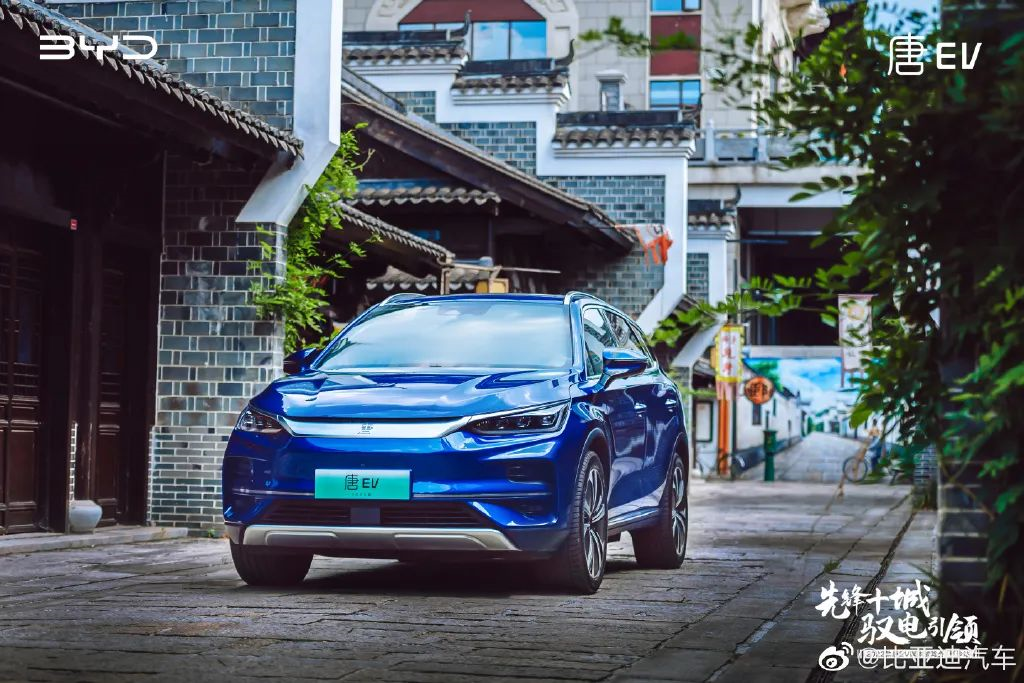 The price of BYD Tang EV covers the price range of Wanjie M5 EV, but in terms of size, Tang EV is much larger and more spacious. Both models face the same problem: there are different power versions under the same model, including Wanjie M5 extended-range version and BYD Tang DM-i version, which have opened up their own markets.
The price of BYD Tang EV covers the price range of Wanjie M5 EV, but in terms of size, Tang EV is much larger and more spacious. Both models face the same problem: there are different power versions under the same model, including Wanjie M5 extended-range version and BYD Tang DM-i version, which have opened up their own markets.
Last year, in the face of their own main DM-i version, Tang EV did not seem to have gained much traffic, but rather became a background board for consumers to compare when making choices. Therefore, BYD has improved the performance of the newly launched 2022 Tang EV to enhance its competitiveness.
This is also an unavoidable situation for Wanjie M5 EV after its launch. After all, except for a few areas with license restrictions, consumers are inevitably facing two power versions with similar appearance, size, and intelligent experience in the same store, so comparisons are inevitable.
Perhaps with the benefit of hindsight, Wanjie M5 EV did not simply replace the engine and range extender with power batteries and electric drive systems, but “upgraded” a lot of details, especially in the intelligent “soft power”.
Soft Power: Impressive and Powerful
In most new car release conferences, speakers usually first discuss the “value” and then talk about the core performance data of the vehicle, followed by the intelligent functions in the cabin.
AITO’s release of the Wanjie M5 EV gives people the feeling that it is selling the vehicle as if it were an intelligent smartphone, beyond the core performance of the car.
As expected, HarmonyOS 3 is installed in AITO Wanjie M5 EV’s intelligent cabin. HarmonyOS has always been quick and smooth in the car system, never disappointing anyone. In our previous “interrogation-style” testing of the extended-range version of AITO Wanjie M5, it was unique to have the ability to continuously call up dozens of in-car applications by voice like HarmonyOS, without any lag or stutter.
AITO Wanjie M5 EV has full car four-zone recognition, and the voice assistant “Xiao Yi” supports advanced voice capabilities such as wake-up-free and visible-to-speak, which are currently popular. In addition to Mandarin, it also supports Cantonese and Sichuan dialects.
Speaking of which, the last time we saw a car that explicitly supported dialects was the Mercedes S500 we tested in our “Intelligent Cabin Intelligence Bureau” column last year.As one of the signature features of HarmonyOS 3 smart cockpit, Super Desktop is also present. Applications on the HarmonyOS mobile side can seamlessly transfer to the car system by integrating the mobile ecosystem with the in-car ecosystem. According to publicly available information released earlier, Super Desktop has already integrated more than 3,400 apps including over 200 head apps smoothly.
This means that in addition to the pre-installed applications provided by the smart cockpit system and the applications available for download from the application market, almost all of the user’s mobile applications can enter the car system. Not only is the application interface layout adapted, but it also supports the mutual calling between the smartphone and the in-car hardware, such as using the in-car camera to shoot Vlog, which can be uploaded to social platforms via smartphones.
Yu Chengdong specifically emphasized that in order to dispel users’ concerns about privacy, AITO AITO M5 EV provides multiple means of data and privacy protection. After the user gets off and disconnects, the car will immediately log out the account and leave no traces of use. It even delves into the scenario of designated drivers and opens a visitor mode specifically for designated drivers.
As an ICT giant, Huawei’s accumulated technology in the mobile network field has been brought into the car cockpit. Through intelligent sharing, HarmonyOS mobile phones can compensate for the signal of the car system to ensure the stability of the car network.
Of course, we also want to know whether this will be more stable and superior than the way of turning on the mobile hotspot on the smartphone to provide network for the car system? After all, when the phone acts as a hotspot, overheating and fast power consumption have always been common problems.
Perhaps considering the demand for multi-user charging, Huawei provides the newly added dual wireless charging pad on the AITO AITO M5 EV, which is based on the dual wireless charging pads on the AITO M7. Two 40W wireless super-fast charging pads, three 66W wired super-fast charging pads, and one 18W wired fast charging pad all together form the lineup that claims to be the “industry’s strongest in-car charging”. If there are no surprises, the first two require smartphones that support Huawei’s own fast-charging protocol to achieve.To meet the specific needs of different users with different physical conditions, AITO WENJIE M5 EV is equipped with a highly intelligent HUD height adjustment function. Combined with AI algorithms, it can locate the position of the user’s eyes and the mapping distance from the user’s eyes to the HUD height, and automatically adjust the HUD display height to ensure that the HUD content is always in the optimal display state.
In terms of energy supplement, Huawei has planned a large number of functions for AITO WENJIE M5 EV in HarmonyOS 3 to improve the user experience of the car process.
- For example, in the petal navigation application, intelligent planning of charging stations along the way is provided to the user.
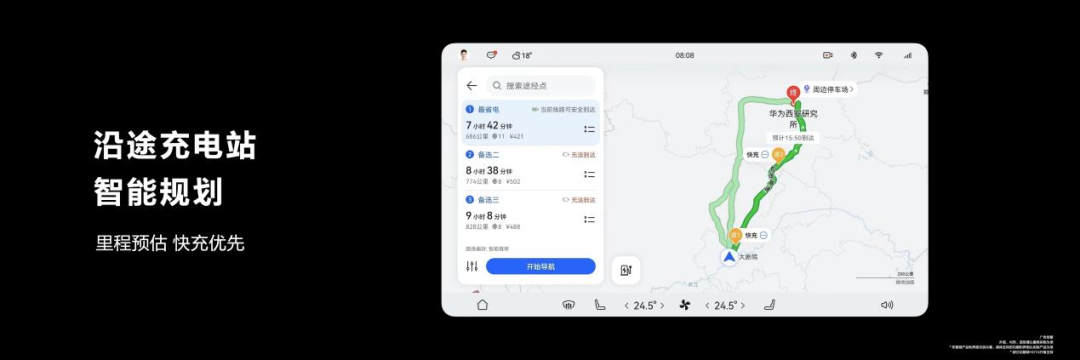
- For instance, based on the current battery level of the vehicle, it estimates the farthest surrounding range and reachable mileage.

- In the interface for finding charging stations, it displays key information such as the number of available fast/slow charging piles, prices, and even available range when reaching.

- It can also provide users with charging reminders based on their charging habits and weather conditions.

- Even the super power-saving mode in smartphones has been introduced, becoming the “industry’s first” function for users to squeeze out the last 12 kilometers of emergency cruising range in specific situations.
AITO WENJIE M5 EV not only supports finding parking spaces and reservations, but also can recognize parking space information according to the OCR (Optical Character Recognition) algorithm and transparent chassis dual-view recognition, and link with the mobile phone to help users find their parked vehicles more conveniently.
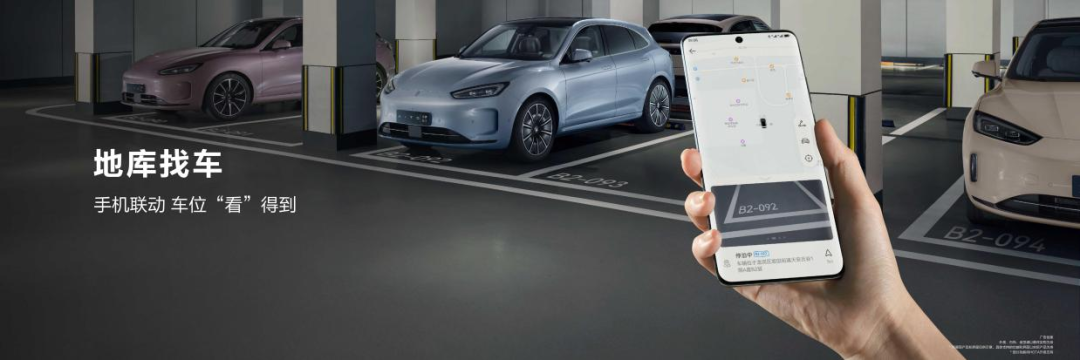
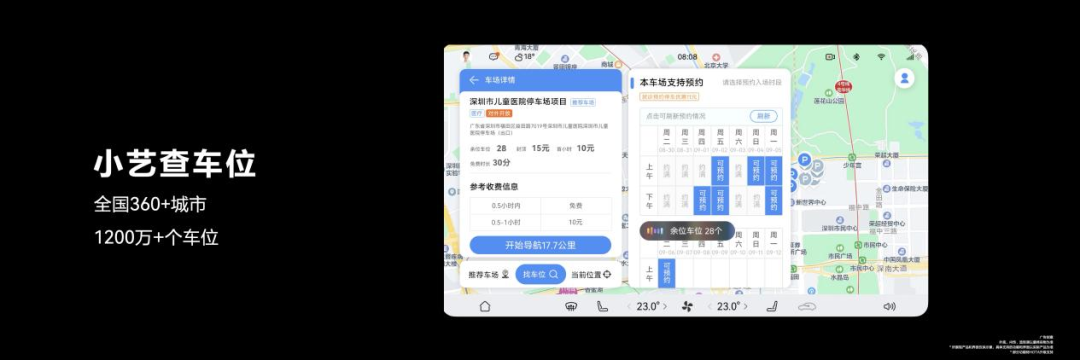
The descriptions of these detailed functions have run through almost the entire process of the AITO WENJIE M5 EV release event.
There were no value-less parts, no grandiose words, and no abundant expressions.
It is strange that the phrase “smart cockpit”, which is the industry’s favorite to mention, was barely mentioned in the speech.
I think this is the clever part of it.
In his speech, Yu Chengdong seemingly introduced functions exhaustively, but actually conveyed the experience to everyone in the most down-to-earth approach and described scenarios in words that anyone can understand. Rather than “what we have” or “how we do it”, and not the concept of “smart cockpit” which is not so easily understood by car users.
It appears that Huawei is really selling cars, without quotation marks.
In conclusion
“To whom will this car be sold?”
For the question that will always arise in people’s minds, I think the answer has already been there.
For young and middle-aged users who have a need for intelligent vehicle use, for Chinese people who have a certain degree of trust in the Huawei brand, for car owners who are tired of traditional brands.
Or, to provide one more choice for ordinary users who just want to buy a new energy vehicle with regard to policies.
“Can these companies make good cars first before adding all sorts of intelligent features?”
This is a sentence we often see in the comments section of GeekCar articles, even on social media.
Is making good cars and providing a good intelligent experience really contradictory?
The decision to consume is a very complex one. The information delivered through marketing by manufacturers is only one aspect. More importantly, users continuously reduce their own needs to the promised scenarios of the manufacturer, to see if they can move themselves.
Whether it is the functions and details brought by the HarmonyOS upgrade that truly improves productivity, overall convenience and experience, or just makes the user feel more beautiful. Each independent user entity may not necessarily use every function, but together they cover the understanding and coverage of demand scenarios.
Just like me, who commutes daily through ride-hailing, a small flashback window on the main interface of my phone that can display vehicle information and arrival time makes me feel good because it allows me to avoid the hassle of switching back and forth between ride-hailing apps and other applications while waiting for the car.
Whether it is the intelligent dimension or small experiences, who can guarantee that when these accumulations occur, they will not become the key to purchase decisions?
At the conference, Yu Chengdong talked extensively about intelligence, so what is the value?
Make “cars” themselves not inferior to competitors, and leave the rest to intelligence, experience, and the brand itself.This is Huawei’s logic.
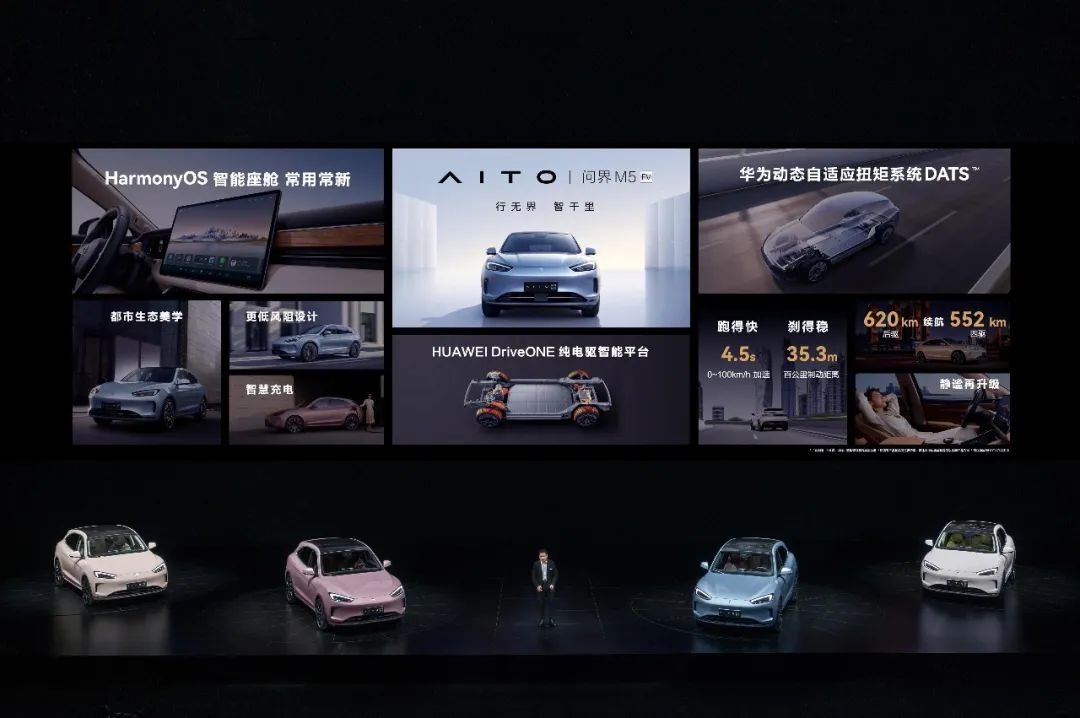
This article is a translation by ChatGPT of a Chinese report from 42HOW. If you have any questions about it, please email bd@42how.com.
